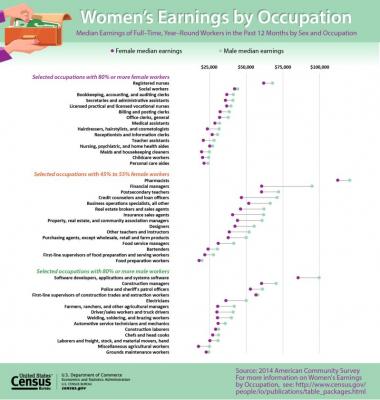The roots of National Women’s History Month go back to March 8, 1857, when women from various New York City factories staged a protest over working conditions. International Women’s Day was first observed in 1909, but it was not until 1981 that Congress established National Women’s History Week to be commemorated annually the second week of March. In 1987, Congress expanded the week to a month. Every year since, Congress has passed a resolution for Women’s History Month, and the president has issued a proclamation.
Following are some key statistics compiled by the U.S. Census Bureau in honor of Women's History Month:
163.2 million
The number of females in the United States as of July 2015. The number of males was 158.2 million.
2 to 1
The approximate ratio by which women age 85 and older outnumbered men in 2015 (4.1 million to 2.1 million).
76.1 million
The number of females age 16 and older who participated in the civilian labor force in 2015. Women comprised 47.4 percent of the civilian labor force in 2015.
43.9%
The percentage of women who were life, physical and social science scientists in 2015, the highest percentage of women among all computer, engineering and science occupations. There were 24.8 percent of computer and mathematical occupations and 14.0 percent of architecture and engineering occupations held by women.
1.6 million
The number of women veterans in the United States in 2015.
$40,742
The median annual earnings of women age 15 and older who worked full time, year-round in 2015. In comparison, the median annual earnings of men were $51,212.
9.9 million
The estimated number of women-owned firms in the United States in 2012, up from 7.8 million or 26.8 percent in 2007.
For more key demographic and economic statistics on women in America, please see the U.S. Census Bureau's Facts for Features: Women's History Month, March 2017.


